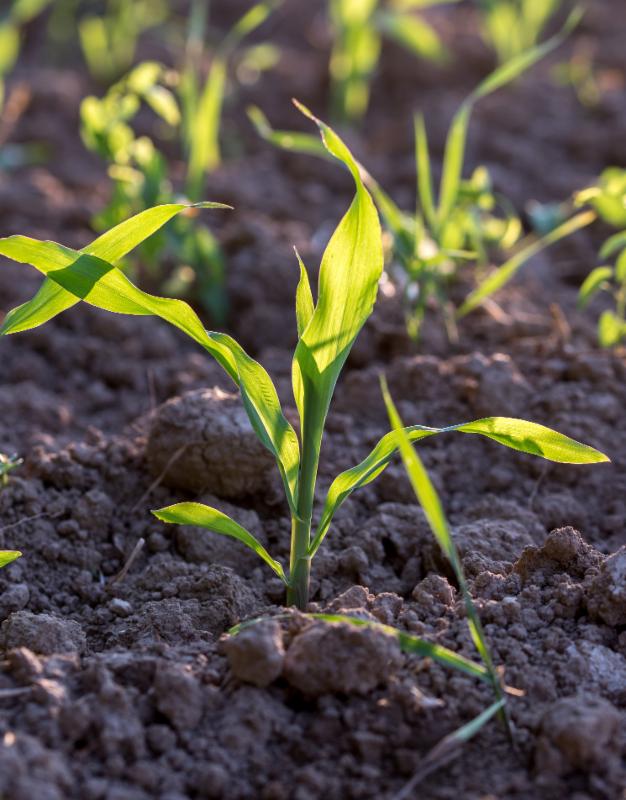Soybean Grower Workshops
Coming Soon
Federated's Soybean Grower Workshops get underway later this month, and as spring plans take shape be sure to attend one of these informative meetings. Get the latest information on these important topics for 2016:
- Xtend® 2 Soybean Weed Control System, and Related Genetics
- Enlist® Soybean Weed Control System, and Related Genetics
- Winning the Fight Against Weed Resistance
- Using Biologicals and Growth Promoters in Soybeans
RSVP to your Federated Agronomist to reserve your space at one of the free workshops listed below. Meetings start at 10 a.m. with lunch to follow at noon.
Mon. March 21
Albertville - Albertville City Hall
Tues., March 22
Rush City - Rock Creek Town Hall
Wed., March 23
Isanti - Captain's on Long Lake
Thurs., March 24
Ogilvie - Northern Lights, Pease
Fri., March 25
Osceola - American Legion, St Croix Falls
|
|
|
|
|
Dry Starter Fertilizer at Planting
Sets Stage for Seed Development
"One of the more important considerations at planting time is the choice of starter fertilizer," said Matt Kurtz, manager at Federated's Rush City location. For growers with older planters, dry starter fertilizer is the only option, but even growers with newer planters often choose dry over liquid.
You can put down a lot more acres between fills [with liquid]," said Kurtz, "but you can't put down as much product [as you can with dry]."
 Dry starter fertilizer puts down more pounds, right next to the plant, and since early seed and root development is dependent upon phosphorus (P) and potassium (K), the dry option "makes sure there is food available for the plant early on," said Kurtz. "The cool ground means the microbes are not up and running to mineralize and make the P and K available to the little corn or bean plants right away," he said. Starter fertilizer provides what the plants need until temperatures rise and the microbes and fungi start working, and what's banked in the soil becomes available to the plant. Dry starter fertilizer can also be blended with micronutrients (see article below), bumping up the starter blend to get essentials incorporated closer to the plant. Dry starters are also a good option for rented ground where the best investment is in the crop, not necessarily in the soil. "Even with corn prices down, it's not a good idea to skimp on early plant health. Set yourself up for good yield down the road," said Kurtz. Get crops off to a good start to avoid unhealthy plants that won't recover. "Make sure you are in contact with your Federated Agronomist now," said Kurtz. Even if crop plans are still in flux, "let us know your numbers so we can plan how many tons we are going to need. Give us a ballpark to be better prepared," he said.
|
Micronutrients Help Maximize Yields
Zinc. Alphabetically at the end, but agriculturally at the start, Zinc (Zn) is one of the first elements crops need. This important micronutrient is essential for plants and, when deficient, is the one most commonly limiting yield, according to Duane Droogsma, Federated agronomist at the Rush City location.
"Zinc deficiency happens due to earlier planting of corn in cool and damp conditions," he said. Zinc is heavily involved in enzyme systems that regulate the early growth stages, and zinc is vital for root system development; it is also required in protein synthesis and growth regulation.
"Zinc is a team player with nitrogen (N), phosphorus (P), and potassium (K) in many plant development processes," Droogsma said.
Federated recommends Racer™, from Rosen's (see fact sheet), to be mixed with dry fertilizer (see article above) at 6.3 lbs./ac. to provide 1 lb./ac. of zinc on corn.
Alternatively, MicroEssentials™ SZ (12-40-0-10S-1Zn), by Mosaics, is a granule created through a fusion technology process to get N, P, S, and Zn into one "nutritionally balanced granule" that creates a single source of nutrition for the crop (see fact sheet).
MicroEssentials SZ provides:
- uniform nutrient distribution,
- improved nutrient uptake (especially of phosphorus in diverse soil conditions, as are typical in the early part of the growing season), and
- season-long sulfur availability (with two forms of sulfur - sulfate and elemental sulfur - in every granule).
Contact your Federated Agronomist to discuss the best fertilizer and micronutrient options for your crops this year. Plan now for great yields this fall.
|
|
|
|
|